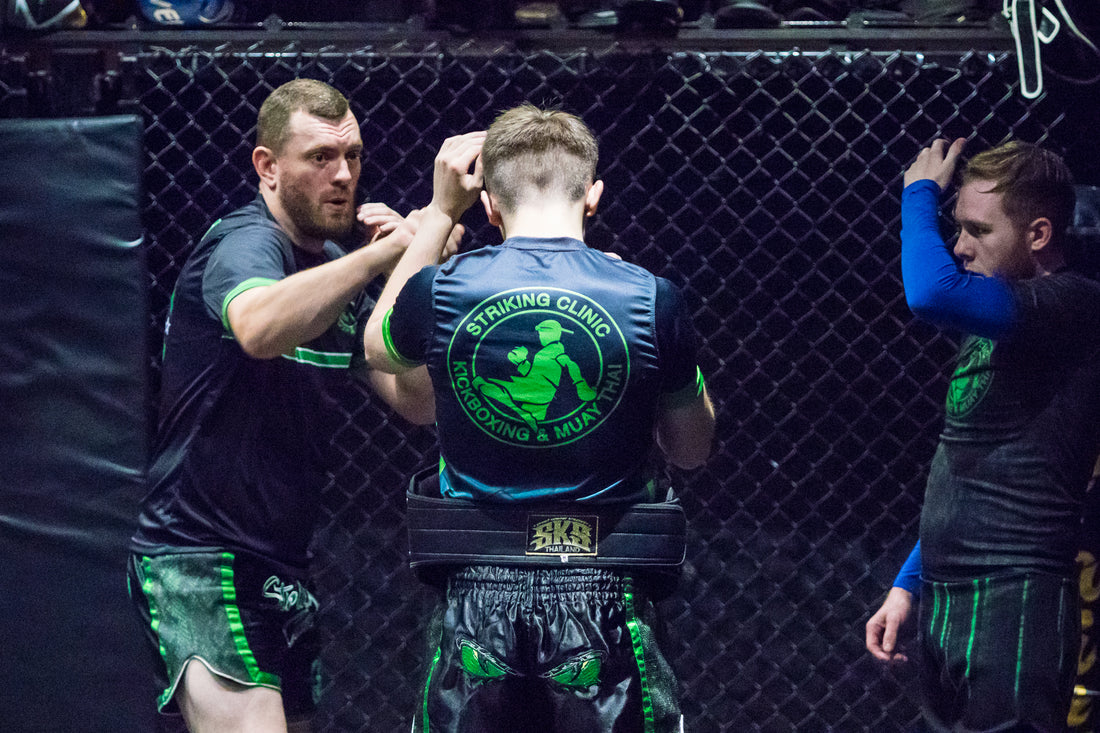
K1 Kickboxing - Keep Your Guard Up
Share
Fundamentals of K-1 Kickboxing
K-1 kickboxing is a combat sport that originated in Japan in the early 1990s. It is a combination of karate, boxing, and Muay Thai, and is known for its high-intensity fights and explosive knockouts. K-1 kickboxing has become a popular martial art and combat sport around the world, with events held in many countries.
The sport was founded by Kazuyoshi Ishii, a former Seidokaikan karate practitioner, who wanted to create a new form of martial arts that would allow fighters from different disciplines to compete against each other. The name K-1 comes from the fact that the sport features fighters from different weight classes, with the "K" standing for karate and the "1" representing the best fighter in each weight class.
In K-1 kickboxing, fighters compete in a square ring wearing boxing gloves and shorts. Each match includes three rounds, with each one being three minutes long. The rest period between the rounds is one minute. In case of a draw, there is one extra round. There are ten weight classes in pro K-1 and nineteen in amateur competition.
One of the most important aspects of K-1 kickboxing is the guard position. The guard is a defensive stance that protects the fighter's face and body from incoming strikes. There are several different guard positions that fighters can use, depending on their style and preference.
The most common guard position in K-1 kickboxing is the high guard. This is where the fighter holds their hands up high, with their elbows tucked in close to their body. The high guard is effective at blocking head shots and can be used to counterattack with hooks and uppercuts.
Another guard position is the low guard. This is where the fighter holds their hands low, with their elbows out wide. The low guard is effective at blocking body shots and can be used to counterattack with jabs and straight punches.
In addition to the high and low guard positions, there are also variations of each position that fighters can use. For example, the peek-a-boo guard is a variation of the high guard that involves tucking the chin down and looking up through the eyebrows. This guard is effective at blocking head shots and can be used to counterattack with hooks and uppercuts.
Overall, the guard position is an essential aspect of K-1 kickboxing and is something that all fighters must master. By using the right guard position, fighters can effectively defend themselves from incoming strikes and launch counterattacks with precision and power.
Guard Positions and Techniques
In K-1 kickboxing, the guard position is crucial for defending against strikes from your opponent. A good guard position should provide you with a solid defense while allowing you to quickly transition to an offensive position.
There are several guard positions and techniques that you can use in K-1 kickboxing. These include:
-
Long Guard: This guard position involves extending your lead arm forward and keeping your rear arm close to your body. The long guard is effective for keeping your opponent at a distance and defending against long-range strikes.
-
Low Guard: The low guard involves dropping your lead arm and keeping your rear arm close to your body. This guard position is effective for defending against body shots and low kicks.
-
High Guard: The high guard involves keeping both arms close to your head and chin. This guard position is effective for defending against head strikes and uppercuts.
-
Shell Guard: The shell guard involves tucking your chin down and bringing your arms close to your body. This guard position is effective for defending against hooks and overhand punches.
In addition to these guard positions, there are several techniques that you can use to control your opponent and defend against strikes. These include:
-
Clinching: Clinching involves grabbing onto your opponent's body and controlling their movement. This technique can be used to defend against strikes and set up your own strikes.
-
Sweeps: Sweeps involve using your leg to knock your opponent off balance and bring them to the ground. This technique can be used to defend against kicks and set up your own strikes.
-
Throws: Throws involve using your body to take your opponent to the ground. This technique can be used to defend against strikes and set up submissions.
Overall, the key to a good guard position and effective defense in K-1 kickboxing is to stay relaxed and focused. By using the right guard positions and techniques, you can defend against your opponent's strikes and set up your own strikes for a successful fight.
Training and Preparation
To become proficient in K1 kickboxing, training and preparation are essential. Regardless of your age, you need to condition your body to withstand the physical demands of the sport.
Training should include a combination of aerobic and anaerobic exercises to improve your cardiovascular fitness and endurance. Aerobic metabolism is essential for maintaining energy levels throughout the fight, while anaerobic metabolism is necessary for explosive movements, such as punching and kicking.
Reaction time is also crucial in K1 kickboxing. Practising drills and exercises that improve your reaction time can give you an edge in the ring. Coaches can help you develop these skills and provide feedback on your technique.
When it comes to equipment, boxing gloves and wraps are mandatory for training and fighting. It is essential to invest in high-quality gear that provides adequate protection for your hands and wrists. Additionally, shorts that allow for a full range of motion are necessary for optimal performance.
Preparing mentally for a K1 kickboxing match is just as important as physical preparation. Visualisation techniques and mental training can help you stay focused and calm during the fight.
Overall, training and preparation are crucial for success in K1 kickboxing. With the right approach and mindset, you can achieve your goals in the sport.
Competitions and Matches
In K-1 kickboxing, matches are typically contested between two fighters in a ring. The goal is to knock out the opponent or score more points through effective strikes. Matches can be scheduled for three or five rounds, with each round lasting two minutes.
Competitions in K-1 kickboxing are divided into weight divisions, with fighters competing against others in their respective categories. The middleweight division is one of the most popular categories in K-1 kickboxing, with fighters weighing between 70 and 80 kg.
Judges play an important role in K-1 kickboxing competitions, as they are responsible for scoring each round. Points are awarded for effective strikes, takedowns, and other techniques. If a match ends in a draw, an additional round may be contested to determine the winner.
K-1 Global Holdings Limited is one of the most prominent kickboxing promotions in the world, organizing events featuring top fighters from around the globe. The company's schedule includes events in various categories, including the heavyweight division.
Glory Kickboxing is another major kickboxing promotion, known for its high-level competitions featuring some of the sport's top talent. The company's events are widely regarded as some of the most exciting and competitive in the world of kickboxing.
Overall, K-1 kickboxing competitions and matches offer an exciting and challenging experience for fighters and fans alike. With its emphasis on striking and technique, the sport continues to grow in popularity around the world.
Article created by Rise Online
